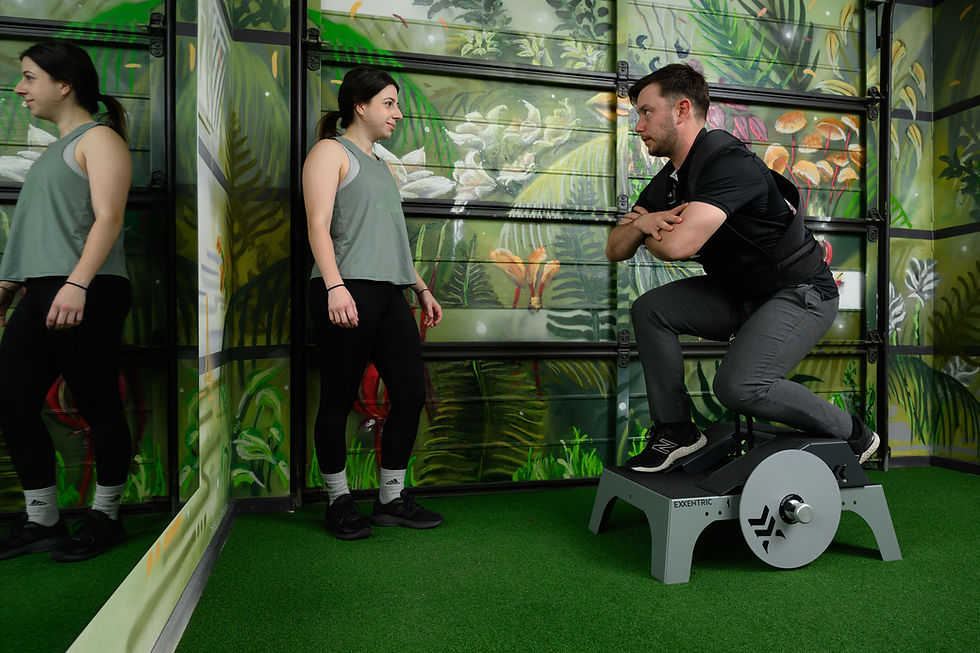Understanding Vestibular Migraine: Diagnosis, Management, and Evidence-Based Approaches
- Thomas Pope

- Mar 26
- 4 min read

Vestibular migraine (VM) is a common but often under-diagnosed condition that affects the vestibular system, causing episodes of dizziness, vertigo, and migraines. Patients with VM typically experience both migraine headaches and vestibular symptoms (related to balance and spatial orientation), which can significantly impact their quality of life. This blog post will provide a comprehensive overview of vestibular migraine, including the latest diagnostic criteria, management strategies, and evidence-based practices for effective treatment.
What is Vestibular Migraine?
Vestibular migraine is characterised by recurrent episodes of vertigo or dizziness that are associated with a history of migraines. The symptoms may occur in the absence of a headache or may coincide with the typical migraine attack. The condition is commonly misdiagnosed as other types of vertigo, such as benign paroxysmal positional vertigo (BPPV), Meniere's disease, or vestibular neuritis, which is why a thorough understanding of its distinct features is crucial.
Symptoms of vestibular migraine may include:
Recurrent vertigo or dizziness, lasting anywhere from a few minutes to several hours
Sensitivity to light or sound, which is typical of a migraine
Headaches (although not always present during every episode)
Nausea, vomiting, or a general feeling of unsteadiness
Sensory disturbances, such as visual auras
Diagnosing Vestibular Migraine
Diagnosing vestibular migraine can be challenging because the condition presents with symptoms similar to other vestibular disorders. However, the International Headache Society (IHS) has provided updated diagnostic criteria, which have been validated by contemporary research and clinical practice.
The diagnostic criteria for vestibular migraine include:
At least five episodes of vestibular symptoms (e.g., vertigo, dizziness, unsteadiness) lasting between 5 minutes and 72 hours.
At least one episode of migraine, with a headache meeting the International Classification of Headache Disorders (ICHD) criteria.
Vestibular symptoms that are either accompanied by a migraine attack or occur in the absence of a headache but with a history of migraine.
It’s important to differentiate vestibular migraine from other vestibular disorders, such as BPPV or Meniere's disease, which may require additional testing, including audiological assessments, imaging studies (e.g., MRI), and vestibular function tests.
Management of Vestibular Migraine
Managing vestibular migraine involves a multifaceted approach, including lifestyle modifications, pharmacological treatments, and vestibular rehabilitation. Contemporary evidence emphasises the importance of a holistic treatment plan that addresses both the vestibular and migraine components of the condition.
1. Lifestyle Modifications
Lifestyle changes are crucial in managing vestibular migraine, as triggers can vary widely among individuals. Identifying and avoiding personal migraine triggers is one of the first steps in treatment. Common triggers for vestibular migraines include:
Stress and anxiety
Lack of sleep
Hormonal fluctuations (especially in women)
Dietary triggers (e.g., caffeine, alcohol, processed foods)
Environmental factors such as bright lights or loud sounds
Dietary and Sleep Management: The role of diet and sleep in managing vestibular migraine has been well-documented in clinical studies. Ensuring adequate hydration, regular sleep patterns, and a balanced diet can significantly reduce the frequency of episodes. Studies have shown that eliminating foods/drinks containing high levels of caffeine may be beneficial in reducing symptoms.
2. Pharmacological Treatments
Pharmacological treatments focus on reducing the frequency and severity of both the migraine attacks and the vestibular symptoms. Commonly used medications include:
Abortive treatments: These are used to treat acute episodes of dizziness or headache and include triptans (e.g., sumatriptan), antiemetics (e.g., meclizine), or nonsteroidal anti-inflammatory drugs (NSAIDs) to reduce inflammation and pain.
Preventive treatments: For patients with frequent or severe episodes, preventive medications may be recommended. Evidence-based options include:
Beta-blockers (e.g., propranolol) to reduce migraine frequency
Tricyclic antidepressants (e.g., amitriptyline) to manage both the headache and vestibular symptoms
Anticonvulsants (e.g., topiramate), which have shown effectiveness in reducing the frequency of vestibular migraine attacks
3. Vestibular Rehabilitation Therapy (VRT)
Vestibular rehabilitation therapy (VRT) is an evidence-based approach that focuses on exercises designed to improve balance and reduce dizziness. VRT involves personalised exercises that help retrain the brain to compensate for the abnormal vestibular signals that occur during a VM episode.
Key components of VRT include:
Habituation exercises: Designed to reduce sensitivity to specific movements or positions that provoke dizziness
Gaze stabilisation exercises: Aimed at improving visual tracking and reducing dizziness during head movements
Balance exercises: To improve postural stability and reduce the risk of falls
A comprehensive study published in the Journal of Vestibular Research has shown that VRT can significantly reduce dizziness and improve balance in patients with vestibular migraine. In fact, incorporating VRT into the treatment plan can help manage vestibular symptoms and reduce the reliance on medications.
Conclusion
Vestibular migraine is a complex and often under-recognised condition that can severely impact the daily lives of those affected. However, with advancements in diagnostic criteria and evidence-based management strategies, including lifestyle modifications, pharmacological treatments, and vestibular rehabilitation, patients can experience significant improvements in their symptoms and quality of life.
At Physio on Patterson, our team is committed to providing evidence-based treatments and working with each patient to create a personalised care plan that addresses both vestibular and migraine symptoms. If you or someone you know is struggling with symptoms of vestibular migraine, don't hesitate to reach out to our clinic for a thorough assessment and effective management strategies tailored to your needs.
For more information on vestibular migraine and how physiotherapy can help, please contact Physio on Patterson today.
References:
International Headache Society (IHS) Classification of Headache Disorders, 3rd Edition (2018).
Brandt, T., et al. (2020). Vestibular migraine: Diagnostic criteria and treatment strategies. Neurological Sciences.
Furman, J. M., & Marcus, D. A. (2020). Vestibular rehabilitation therapy for vestibular migraine. Journal of Vestibular Research, 30(1), 9-18.





Comments